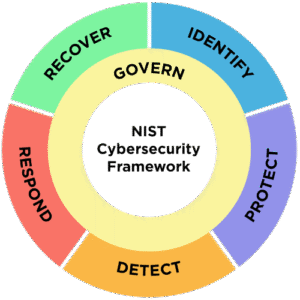Secure data disposal is a critical business need. Failing to properly destroy data at end-of-life can result in breaches, penalties, and harm to your reputation. This guide provides a concise overview of key data destruction frameworks—NIST, GDPR, HIPAA, and PIPEDA—clarifying essential requirements and best practices for regulatory compliance.

NIST Data Destruction Standards
NIST Special Publication 800-88 outlines three main data destruction methods:
- Clear: Overwrite data so it’s unrecoverable using standard system utilities. Suitable for internal device reuse.
- Purge: Use physical/logical methods, like degaussing or cryptographic erase, to make recovery extremely difficult, even with advanced techniques.
- Destroy: Physically destroy the media (e.g., shredding, incineration) so data is impossible to recover or reuse.
Organizations should select a method based on data sensitivity and compliance needs.
GDPR Data Destruction Requirements

Under the EU General Data Protection Regulation:
- Right to Erasure: Individuals can request complete removal of their personal data. Organizations must confirm secure deletion across all systems and provide evidence within one month.
- Technical and Organizational Measures: Secure deletion at end-of-life is mandatory, with documented procedures and audit trails.
- Fines: Non-compliance can result in significant penalties (up to 4% of global revenue or $23 million).
Effective data destruction is required for any entity processing EU citizens’ data.
HIPAA Healthcare Data Destruction
The Health Insurance Portability and Accountability Act demands:
- Secure PHI Disposal: Electronic protected health information (PHI) must be disposed of to prevent reconstruction.
- Policies & Training: Organizations need clear media disposal policies and staff training.
- Business Associate Agreements: Destruction vendors must have formal agreements outlining obligations.
- Documentation: Must record all destruction activities for audit purposes.
Methods must satisfy the “reasonable efforts” standard to ensure security and compliance.
PIPEDA Data Destruction Standards
Canada’s Personal Information Protection and Electronic Documents Act requires:
- Safeguards: Secure disposal methods appropriate to sensitivity of data.
- Policies: Clear retention and destruction timelines and procedures.
- Accountability: Organizations must verify proper disposal, maintain documentation, and ensure compliance throughout the data lifecycle.
- Breach Notification: Inadequate destruction leading to a breach must be reported.
Data Destruction Best Practices
- Risk Assessment: Classify data and match the destruction method to risk and compliance demands.
- Method Selection: Base your process on data type, sensitivity, and regulation.
- Vendor Management: Vet third-party providers, confirm certifications, and require destruction certificates.
- Chain of Custody: Track handled media from collection to final destruction.
- Verification: Audit and document all destruction activities.
How AIT Ensures Compliance
At AIT, we provide industry-leading data destruction services aligned with NIST, GDPR, HIPAA, and PIPEDA requirements:
- Certified Destruction: Multiple destruction methods tailored to your compliance scope.
- Regulatory Assurance: Up-to-date with all major frameworks and best practices.
- Comprehensive Documentation: Detailed reports and certificates for proof of every destruction job.
- Secure Chain of Custody: Full tracking from pickup through final disposal.
Contact us to discuss customized, compliant solutions that protect your data and reputation.